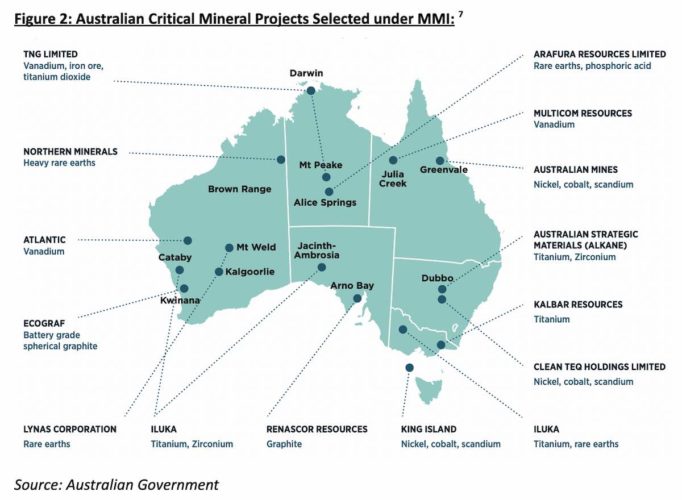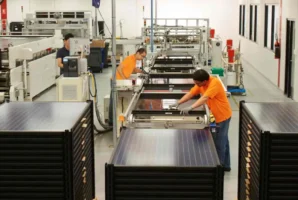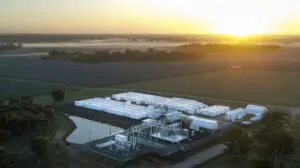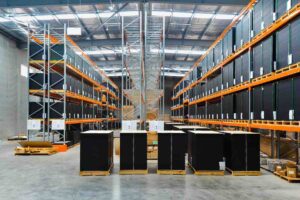This is the sixth article in a series on value-adding critical minerals opportunities in Australia. You can read the previous installations here, here, here, here and here.
The Federal Budget, released this week, brought forth a number of new programs and funds to accelerate the transition to clean energy technology, as well as confirming expenditures on commitments made pre-election.
A $1.9 billion Powering the Regions Fund will support industry decarbonisation and development of new clean energy. A new Driving the Nation Fund earmarks $275 million over six years to invest in electric and hydrogen vehicle infrastructure for cheaper and cleaner transport.
The fund will work in association with ARENA to deliver charging infrastructure for regional Australia. And there was the confirmation of the government’s flagship $20 billion commitment to critical transmission infrastructure under the Rewiring the Nation plan, which will enable renewables to flood the grid.
Critical minerals – the key ingredient for delivery of decarbonisation ambition here and worldwide – received a $50.5 million boost in the form of investment in a National Critical Minerals Research and Development Hub as part of the government’s new National Critical Minerals Strategy.
And the $15 billion National Reconstruction Fund, confirmed in the budget, includes a commitment to expand our regional industrial base in critical minerals. In the words of the Treasurer, this means “we can be a country that makes things again, so we can add value to the things we sell to the world, and so that every part of the country can have a stake in our Australian-made future.”
These investment commitments reflect the key themes of Prime Minister Anthony Albanese’s headland speech to the National Press Club in August, where he set out his policy vision after 100 days in office.
“We have everything that goes into a battery. We have lithium, we have copper, we have all of those minerals that will increasingly be in demand. We should be value-adding here,” Albanese said. He argued for a “different approach” to our historical dig and ship economy.
As demonstrated in our previous paper, the rapid acceleration of public and private convergence around energy economy investments in North America, and the efficacy of China’s state-backed clean energy initiatives, show strategic investment by our federal and state governments is key to catalysing private capital engagement. This includes capturing our once in a century opportunity to be a global critical mineral powerhouse.
In this paper we review key Australian public financial capital initiatives, including the latest Net Zero Industry and Innovation Investment Plan introduced by the NSW government this month, and new commitments under the 2022-23 Federal Budget. And we review their role in accelerating the development of Australia’s critical mineral supply chain value-adding projects.
Modern Manufacturing Initiative (MMI)
In October 2020, the previous federal government announced a $1.5bn investment into the Modern Manufacturing Strategy to aid Australian manufacturers to be more competitive, resilient, and build scale in global markets.
The fund was established to transform the critical minerals and processing sector by developing high-value, reputable and dynamic manufacturing.
The MMI acts as a crucial first-loss capital vehicle for Australia’s emerging rare earths, vanadium, cobalt, and nickel suppliers, de-risking and crowding-in private capital. Figure 2 illustrates the projects supported under the modern manufacturing strategy.

Minister for Industry and Science Ed Husic awarded the successful company grants under the MMI in August 2022 following the conclusion of an examination of LNP pork-barrelling.
Australian Vanadium was awarded a $49m grant under the MMI Collaboration Stream to support its Vanadium Project, which has an estimated capex of $604 million, and has potential to be a globally significant producer for the critical minerals, steel and energy storage industry.
The strategic integration of downstream refining onshore captures the value of the rapidly expanding market for vanadium. In June 2022, Australian Vanadium successfully issued a Share Purchase Plan and Institutional Placement, raising $20 million to support the finalising of debt finance and Final Investment Decision (FID).
Lynas Rare Earths was awarded a $15 million grant under the MMI Translation Stream to accelerate the commercialisation of its Kalgoorlie Rare Earths Processing Facility. With a capex of $500m, the Kalgoorlie Processing Facility would onshore downstream refining from its Malaysian Plant, producing Mixed Rare Earth Concentrate (MREC), creating 290 jobs during construction, with 120 sustained. Lynas successfully completed a Retail Entitlement Offer, raising $425 million to finance the onshoring of its MREC operations.
Pilbara Minerals was awarded a $20 million grant under the MMI for the development of a mid-stream Lithium Salts project with ASX-listed Calix. Utilising spodumene concentrate from Pilbara’s Pilgangoora operations (third largest hard-rock lithium operation globally in 2021), a lithium calcination process enables a pathway to decarbonising supply of lithium via reduced waste movement across transport and logistic supply chains.
The MMI grant will enable a Scoping Study for the project, furthering Pilbara’s lithium expansion, and Calix subsequently completed a $60 million institutional equity raise (plus SPP) to fund research, development and deployment (RD&D).
Export Finance Australia (EFA)
EFA provides financial support for Australian exporters and overseas infrastructure developments that deliver value to Australia. EFA is pivoting to start playing a vital component to Australia’s international trade and investment.
Iluka Resources secured a $1.25bn non-recourse loan from the Government’s Critical Mineral Facility for the development of the Eneabba Rare Earth’s Refinery, administered by EFA. With a capex of $1-1.2 billion for its Phase 3 expansion, WA’s Eneabba Rare Earths Project is Australia’s first fully-integrated rare earth refining operation, emerging as a critical actor in onshoring the global supply and value of downstream rare earth projects.
Sunrise Energy Metals’ NSW Sunrise Battery Materials Proposal is strongly positioned to compete as one of the largest and lowest-cost suppliers of nickel and cobalt for the battery industry. Sunrise was offered a $400m debt funding from EFA.
With a pre-production capex of US$1.66 billion, EFA’s debt facility is likely to prove a critical injection to get the proposal to FID. Creating 1,800 jobs through its construction phase, and 400 sustained, the project would produce high-quality nickel for the production of 1 million EVs annually.
Sunrise has repeatedly articulated the importance of higher degrees of vertical integration across the value chain from automakers in order to execute their all-electric strategies. Ownership of assets that continue to generate positive operating cash flows through investment cycles provide the most effective form of metal price hedging for automakers, whilst securing new supply.
Northern Australia Infrastructure Facility (NAIF)
NAIF is a development financier to projects across the Northern Territory plus northern Queensland and WA with a primary focus on driving public benefit and economic growth. Through its financing infrastructure, NAIF has committed $3.5bn to Australian projects.
Hastings Technology Metals was approved for a $140m loan facility from NAIF in February, a critical component for the development of its proposed Yangibana Rare Earths Project. Hastings has significant government financial support, with funding from: (1) NAIF, (2) KFW IPEX-Bank (German State bank), and (3) Finnvera Oyj (Finland Export Credit Agency) for a senior debt facility totalling $400m. Hastings’ Yangibana rare earths refining operation has a pre-production capex of $658m (including contingency), capable of producing up to 15ktpa MREC. Following the NAIF award, Hastings received firm commitments for a $110m two-tranche Placement to accelerate the project’s development. The introduction of these institutions, with support from current long-term shareholders, has boosted Hastings’ position to commission the facility in mid-2024.
Australian Renewable Energy Agency (ARENA)
ARENA is a mechanism for accelerating RD&D in renewables, supporting projects across industries including large-scale solar, EVs, large-scale battery and energy storage, and renewable hydrogen. In FY21, ARENA committed $1.77bn to Australian renewable energy projects.
October 2022 saw ARENA provide a $14m award to part-fund the $38m front-end engineering and design (FEED) study of a 500MW green ammonia project at Brisbane’s Gibson Island by FFI and Incitec Pivot.
Clean Energy Finance Corporation (CEFC)
CEFC is an integral vehicle for crowding-in private investment into Australia’s low-emission future, kick-starting projects across large-scale solar, wind, energy storage and green hydrogen industries. With $10.76bn committed across 265 large-scale transactions, CEFC has catalysed $37bn in investments into Australia’s economy.
October 2022 saw the CEFC assigned to provide low-cost debt facilities for the Marinus Link between Tasmania and Victoria and the NSW-Victoria Interconnector to build out renewable energy zones, including offshore, decarbonising Victorian industry, including Portland aluminium refinery to create green aluminium for export.
We would recommend CEFC’s mandate be expanded to include critical minerals refining.
CleanCo Queensland
CleanCo is a state-owned energy generator and developer which aims to capture Australia’s abundant natural resources to delivery stable, globally competitive low-emission energy solutions.
Sun Metals is targeting 100% renewable energy for its Townsville zinc refinery, including capacity at the 1GW Macintyre wind farm, part secured by a 10-year PPA by CleanCo.
Net Zero Industry and Innovation Investment Plan NSW
Established in October 2022, the Plan aims to invest $360m as the state’s first industrial emissions reduction initiative. Delivering the plan, NSW Treasurer and Energy Minister Matt Kean stated that it will “help the deployment of clean manufacturing precincts in the Hunter and Illawarra and accelerate decarbonisation opportunities for NSW’s highest emitting industrial sectors. These investment priorities will stimulate private sector investment to further drive the decarbonisation of NSW industry”. $200m will be dedicated to the deployment of opportunities to reduce industrial emissions, $105m to accelerate strategic abatement opportunities, and $55m to develop low-carbon infrastructure and industrial precincts.
Government support catalyses private capital
Australia is now witnessing the benefits of crowding-in finance, where government investment catalyses private capital inflow, amplifying market signals for the support of the critical minerals industry. Liontown Resources is a key example of private financing from positive market indicators.
Liontown Resources’ Kathleen Valley, WA lithium operation and proposed downstream lithium hydroxide (LHM) facility (valued at $1.5bn) will position this lithium project as one of the largest ex-China suppliers of value-added lithium globally. It will produce ~ 500ktpa spodumene to key actors and suppliers across the battery value chain, from cell manufacturing to direct EV producers. Liontown secured equal agreements for offtake with global giants Tesla, LG Energy Solutions and Ford Motor Co. The proposed capex is $473m. A key component of Kathleen Valley’s FID was the injection of Ford’s $300m debt facility to accelerate the project’s scalability and bankability. The Ford debt facility demonstrates the sector’s growing bargaining power, with a comparatively low interest rate of 1.5% above the bank bill swap rate.
Australia is perfectly positioned to be a renewable energy powered critical minerals superpower, value-adding before export to maximise the investment and employment opportunities as the world accelerates the energy transition and reduces our crippling reliance on fossil fuels. Public-private partnerships will accelerate capital deployment and ensure Australia helps drive global decarbonisation.
Tim Buckley is director of Climate Energy Finance. Matt Pollard is global EV supply chain analyst at Climate Energy Finance.
This analysis is for public interest purposes highlighting the national strategic interests and opportunities for Australia from the global energy transition. It should not be construed in any way as general nor specific financial advice.










